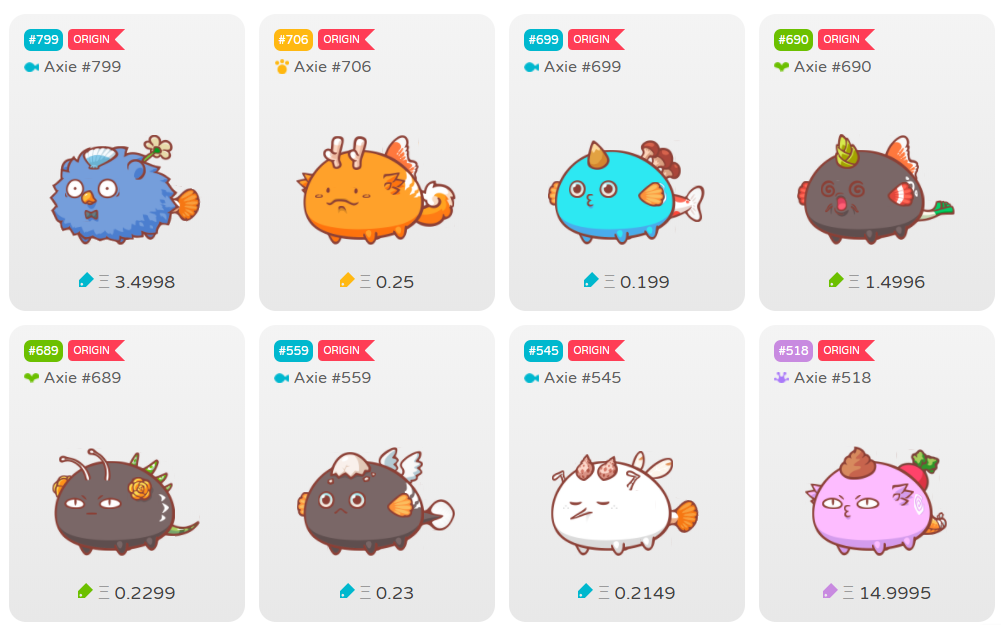The world of gaming is set to undergo a generational transformation with the advent of Web3 technology! In this article, we’ll explore the rise of play-to-earn gaming models and virtual economies powered by crypto, what the benefits of these coming changes will be for gamers, and some of the challenges it will face along the way.
Traditional Gaming Landscape
Before we dive into what Web3 gaming is, let’s briefly review the traditional gaming landscape as it currently stands. The premise of video games has always been that players invest their time and skill to achieve in-game rewards. These rewards can range from enhancing gameplay with items, to cosmetic elements like outfits and weapon skins.
However, in almost all cases, these rewards can’t be transferred or monetized. What’s more, once a new game of the same series is released, the reward stays within the previous title; left to languish, forever forgotten and unused, as the player becomes occupied with the newer version of their favorite game.
Enter Web3 Gaming
Web3 gaming represents a fundamental shift in how we approach video gaming. It combines gaming with blockchain technology, enabling players to have true ownership of in-game assets and earn real-world value. But how?
Virtual Economies

Virtual economies are central to Web3 gaming; an interconnected system of virtual goods, services, and currencies. Here’s a closer look at some of it’s components:
NFTs: NFTs are unique digital assets that represent ownership of in-game items or characters. Unlike traditional in-game items, NFTs can be bought, sold, and traded outside the game and transferred from one user to another seamlessly.
For instance, imagine owning a rare sword as an NFT in a play-to-earn game. This item garners high demand, attracting players who prefer to pay for it rather than invest hours in gameplay. The owner can list it for sale in the in-game marketplace, transferring ownership once it’s sold and earning the gamer a payday for their efforts.
Provable Scarcity: In Web3 gaming, scarcity is created by limiting the supply of in-game assets. This mirrors the real world, where rare items often have greater value. Blockchain tech ensures that the scarcity is verifiable and transparent for all to see.
Native Tokens: Most Web3 games have their own native cryptocurrencies. These tokens can be used to buy in-game assets, trade with other players, and converted into other cryptocurrencies such as Bitcoin, Ethereum, or stablecoins like USDT and USDC.
Examples of Play-To-earn Games

Several play-to-earn games have gained prominence, with Axie Infinity serving as the most successful example to date. The game allows players to collect, breed, and battle fantasy creatures known as Axies. Players can earn the native cryptocurrency, $SLP, simply by playing the game.
Another example is Decentraland, which is a virtual world where players can buy, sell, and build on virtual land, with the native currency $MANA having real-world value.
While numerous games are currently in development, one that has caught our attention over the past year is Treeverse. You can catch up on what this game has in store via our article, “Treeverse: The Next Big Thing In Mobile Gaming?”
Challenges Faced
Web3 gaming has faced heavy pushback from the traditional gaming community. While some believe much of the feedback is emotionally driven from those who fear change, there are some concerns which are worth noting:
Complexity: Gamers are accustomed to straightforward gameplay, and the technical intricacies of blockchain, including setting up wallets and handling crypto transactions, can be daunting for newcomers. Many Web3 game studios understand this hurdle and are actively working to simplify the processes.
Pay-to-Win Fears: Some gamers worry that play-to-earn models could create an environment where those with more resources can easily dominate, leaving others at a disadvantage. The counter argument to this is those who like to grind for rewards will be unaffected regardless, and even possibly be able to earn a side income for their “work.” Again, many studios are aware of this dynamic and are choosing to prioritize gameplay over the monetization aspect.
Ownership vs. Enjoyment: While Web3 gaming emphasizes asset ownership and monetization, traditional gamers are primarily interested in the enjoyment and challenge of the games themselves. They may perceive the focus on financial gains as distracting from the core gaming experience. However, each gamer is different, and if playing purely for fun is your jam, ownership and monetization is merely a side effect that you can choose not to participate in actively.
Environmental Concerns: Gamers have also shown concern about the environmental impact of blockchain technology. However, some argue that our current energy usage in Web2 activities far surpasses what the blockchain could consume in many years.
Final Thoughts
Web3 gaming, with its play-to-earn model and virtual economies, is changing the way we think about gaming. It transforms the current paradigm into one of an immersive experience with real-world value, giving players true ownership of their in-game assets and the potential to earn from their passion.
Despite opposition, game studios like Square Enix are gradually embracing this technology, with many others quietly following suit. It seems that a blockchain-based future for gaming is not a question of “if” but rather “when” at this stage.
Opinions expressed here are opinions of the Author. Influencive does not endorse or review brands mentioned; does not and cannot investigate relationships with brands, products, and people mentioned and is up to the Author to disclose. Accounts and articles may be professional fee-based.

